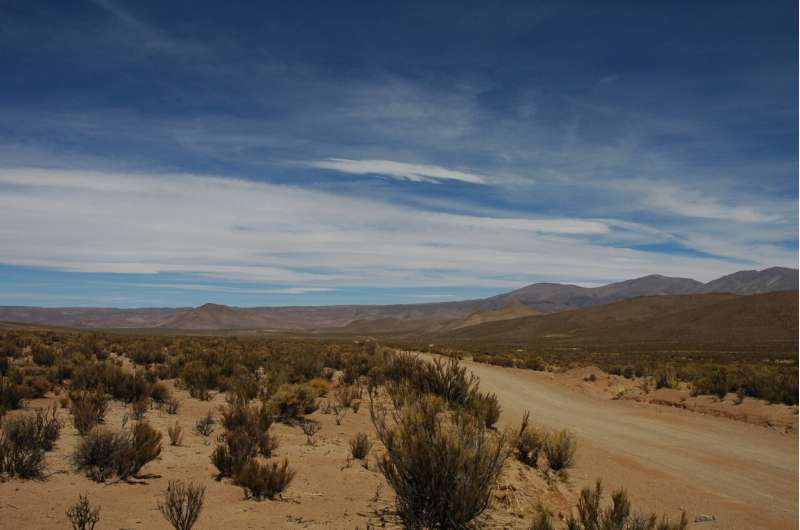This article has been reviewed according to Science X's editorial process and policies. Editors have highlighted the following attributes while ensuring the content's credibility:
fact-checked
peer-reviewed publication
trusted source
proofread
Spacing characteristics between vegetation could be a warning sign of degrading dryland ecosystems: Study

Scientists have found that the spatial arrangement of plants in drylands can be a sign of the environment degrading, according to a new study.
One of the iconic features of drylands is the striking appearance of islands of plants surrounded by bare soil. This spatial structure of arid vegetation has long fascinated scientists, but now a new study published in Proceedings of the National Academy of Sciences, has shed new light on why these plants group in this way.
An international team of scientists, including from the University of Birmingham, combined field data from 115 sites around the world, and used mathematical models and remote sensing to build a picture of how the environment impacts the special structure of the plant life.
Dr. Juliano Sarmento Cabral, Associate Professor for Biodiversity Modelling and Environmental Change at the University of Birmingham who worked on the study, said, "There are two drivers of the biodiversity crisis that are expected to have catastrophic synergies: land use and climate change. We urgently need to understand how ecosystems respond to a lower humidity and less available water, given the increase of extreme drought events expected under the impending climate crisis, something that the UK has already experienced in 2022 firsthand.
"However, the ability of ecosystems to adequately respond to climate change could be jeopardized if they already suffer from human-caused degradation such as overgrazing, depauperate biodiversity and resource exploitation. We are now able to identify tell-tale signs of both the degradation and the ability to cope with a drying environment."
Dr. Sarmento Cabral continued, "Self-organized spatial patterns are a common feature of complex systems, such as microbial communities and mussel beds, and of course dryland vegetation. Researchers have extensively studied implications for this phenomenon, such as functioning and resilience, but until now there was little to no empirical evidence to support this reasoning. To address this gap, we analyzed global drylands along an aridity gradient to see if we could find a connection between the aridity levels and the spacing of the plants."
The scientists found that the spatial structure of vegetation increases with aridity, meaning that the dryer the environment, the more spaced out the plant life will be.
Healthy dryland ecosystems adjust their spatial structure to better cope with stressful environmental conditions, such as drought or high temperatures. As a result, these self-organized vegetation patterns provide drylands with the ability to adapt to these changing conditions while maintaining their functioning, making them more resilient.
However, the researchers also found that this adaptive capacity is lost when ecosystems are already degraded.
Dr. Sarmento Cabral added, "Our study showed that the spatial structure of vegetation plays an essential role in the resilience of arid ecosystems. We also found that degraded ecosystems cannot adapt their spatial structure, and as a result, they become further prone to further degradation as aridity and water shortages increase."
The scientists suggest that monitoring the changes, or lack of changes, in the spatial plant patterns could be used as an early indicator of ecosystem degradation. This could be a crucial step forward for the development of tools to help manage and preserve dryland ecosystems in a hotter and drier world.
As well as this, because vegetation patterning is also key in other natural systems, such as microbial communities or coastal wetlands, the results of the study could also have implications for systems other than arid zones.
Dr. Sarmento Cabral concluded, "As the climate crisis continues and the results are more keenly felt, it is vital that we find ways to closely monitor at-risk ecosystems. Drylands are home to some of our endangered wildlife and rare plant life, so we need to be able to spot early signs of dryland which is suffering so that we can take action to correct and protect what we have left."
More information: Kéfi, Sonia et al, Self-organization as a mechanism of resilience in dryland ecosystems, Proceedings of the National Academy of Sciences (2024). DOI: 10.1073/pnas.2305153121
Journal information: Proceedings of the National Academy of Sciences
Provided by University of Birmingham





















